The State of your Workforce
This past week Gallup released it’s annual “State of the Global Workplace” report. As an Organizational Development (OD) professional, I appreciate the effort that goes into conducting these research studies and love to dive in , look for insights and connect dots. I know….my children also tell me it’s nerdy.
I find value in these reports. When correlated with other data points, they can help leaders know which way the wind is blowing and the strength of the inevitable storms. They can also provide leaders with valuable insights into what might be going on in the minds of their followers. Statistically, the chances are your followers are saying and thinking something similar and experiencing similar emotions. And if they are not today, there is a good chance they will tomorrow.
One of the services we provide at Audit PS is a summary of these types of surveys so you can quickly apply the findings to your Internal Audit practice.
This year’s study continues the theme of employee engagement but starts to dive deeper into why over 50% of our global workforce is not engaged.
Global Engagement Highest since 2009
The first insight highlighted was some great news about employee engagement.
Twenty-three percent of the world’s employees were engaged at work in 2022, the highest level since Gallup began measuring global engagement in 2009.

The US engagement trend is typically better then the global average and held steady this year ( Gallup: Employee Engagement).
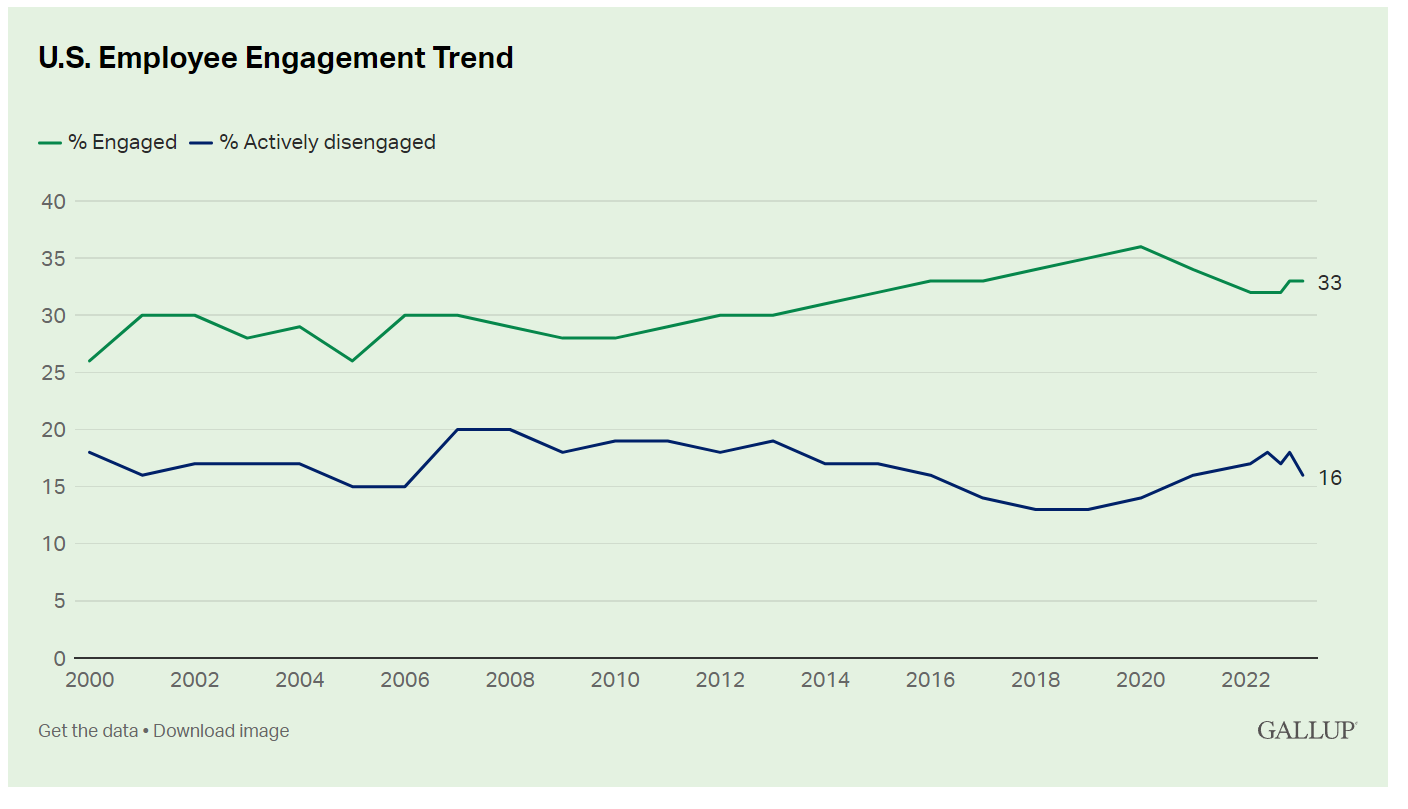
An optimist would point out that this is great news. You will not, however, find me celebrating. Why didn’t the other 77% show up to the party?
Half of your organization is looking for opportunities
The Gallup study distinguishes those in the middle as ‘quiet quitters’, or those not engaged but also not actively fighting against the organization.
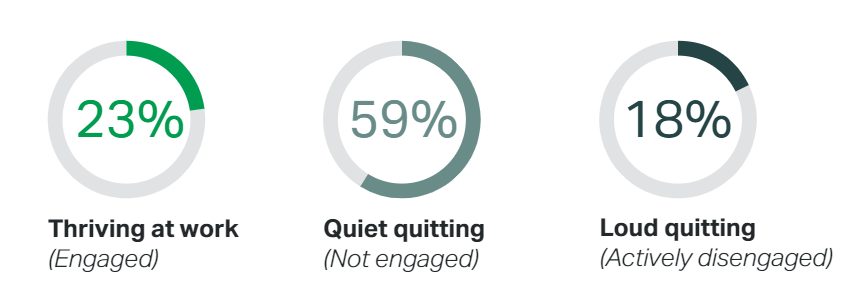
This distinction helps because this is the group of individuals that are on the fence. They are showing up because they need the job. And this is the group that is typically the easiest for organizational leaders to convert to their cause.
The problem is, many of them are also looking for new opportunities.
Fifty-one percent of currently employed workers said they are watching for or actively seeking a new job
“State of the Global Workplace 2023 Report”, pg. 7
Although for US, the number is better (at 49%) , (Gallup, Employee Retention & Attraction) it still means that half of your Internal Audit organization is considering or actively looking for a new opportunity.
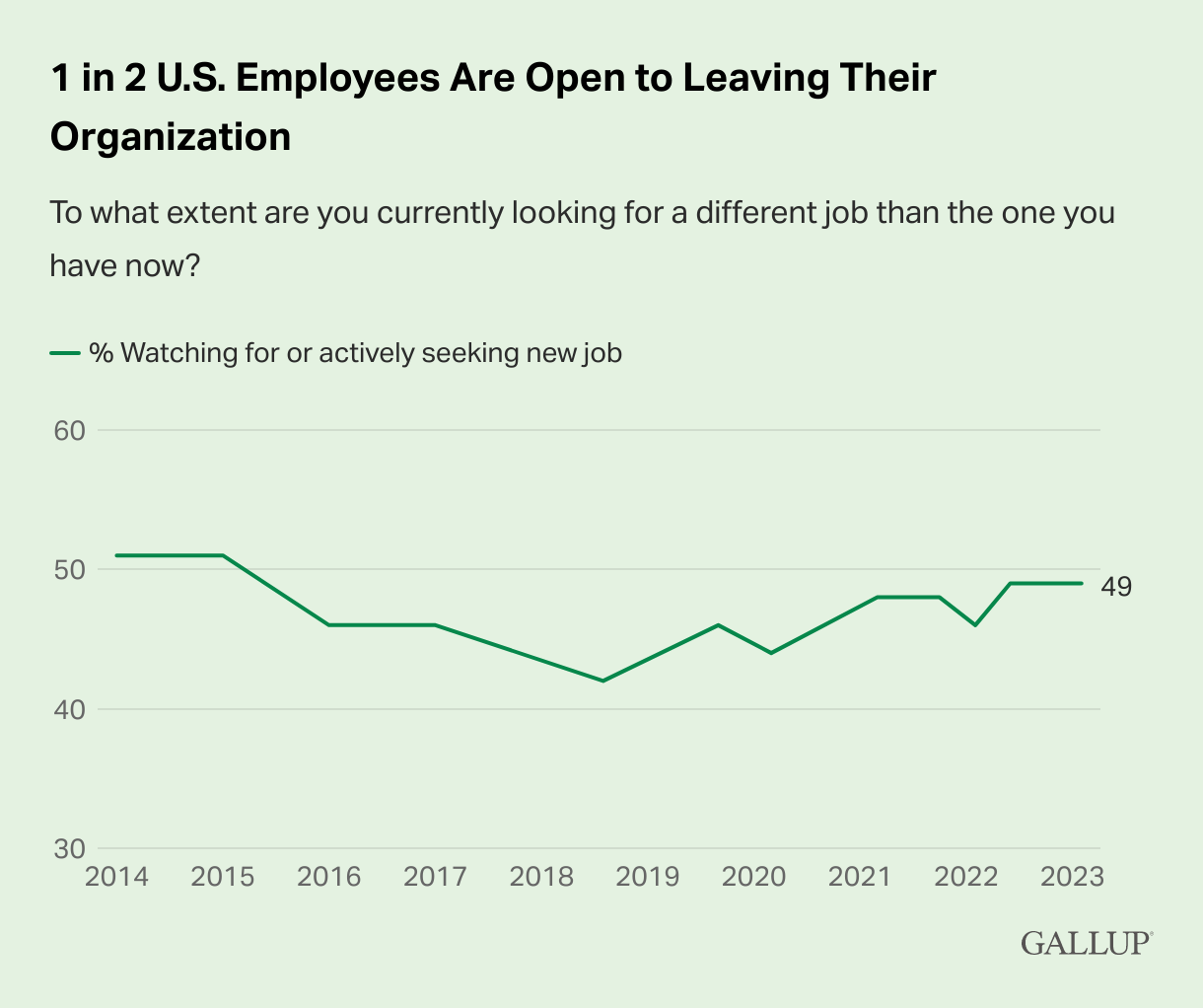
This should come as no surprise when you correlate with the positive attitude about the job market. Those looking for new opportunities have a perception that the grass is greener somewhere else.

And, assuming that Internal Audit follows the Financial Services sector for labor department’s statics, this positive outlook could be fueled by the fact that available openings outpace the number of hires by a 2:1 margin (see BLS).
Fortunately, an event rarely happens that results in 50% of your organization leaving overnight. The typical turnover rate for Internal Audit organizations is probably closer to 15% according to the CPA Journal, which has been my experience as well. That said, if half of your audit organization of 50 is looking for a job and 15% leave, that leaves 25 people marginally engaged and (rounding up) about 8 people leaving. That is still a lot of disruption to your team.
The key insight is: engaging your team isn’t part of the job, it is the job.
Words Matter
Which brings me to the one negative comment I have about this report:
Change the way your people are managed.
Jon Clifton, “State of the Global Workplace 2023 Report”, pg. 1
The problem I have with this statement is that thinking that we must “manage” people is the problem, not the solution.
The people that work in your organization do not want to be ‘managed,’ they want to be led. More importantly, led by a competent, caring leader concerned equally about them as individuals as they are concerned about achieving the organization’s objectives.
This brought to mind a quote by Admiral Hopper:
You manage things; you lead people.
Rear Admiral Grace Murray Hopper (1906-1992)
If we are to improve engagement, we need to change our thinking and language about “managing” people. That said, Gallup certainly understands the difference, and I agree with their intent and have serious respect for their leadership development approach.
My point is this: the words we use make a difference. You can read more about this in my ongoing discussion Words Matter.
Engagement comes before location
For me, the most surprising insight from this study was the lack of any strong correlation between work location (remote, hybrid or on-site) and employee engagement. It would appear that in spite of all the continuing debate over work location, where one performs the job does not have much impact on engagement.

Yes, this chart violates several rules about good chart design, so here is the story:
- 38% of all on-site workers experience stress on the job
- 29% of engaged on-site workers experience stress on the job
- 38% of not engaged on-site workers experience stress on the job
- 52% of actively disengaged on-site workers experience stress on the job
The point they make is this:
…engagement has 3.8 times as much influence on employee stress as work location…their feelings of involvement and enthusiasm — matters more in reducing stress than where they are sitting…the office alone has no magic to create a great organizational culture.
“State of the Global Workplace 2023 Report”, pg. 8
That has also been my observation.
At the same time, if we think about the data points themselves, it is interesting to point out that those working in a hybrid or remote office report experiencing more stress than those that are on-site. Yet they score a a few points higher on engagement.
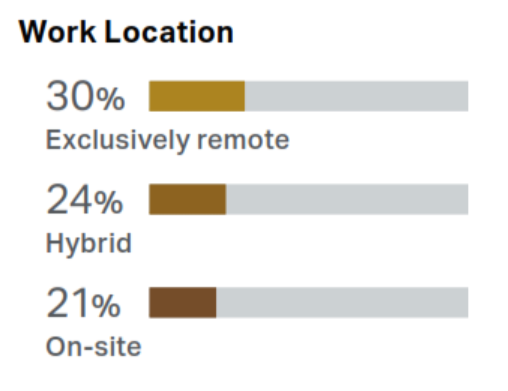
This is a breakdown of the 23% of global respondents that reported being “engaged” by work location.
(Appendix. pg. 14) of Gallup’s report)
Although this further backs up Gallup’s premise that location doesn’t really matter to engagement, I also think it is important for leaders to understand that for some, even though they are in (and may prefer) a hybrid environment, the arrangement can create additional stress.
Actions you can take
Key to Gallup’s survey this year was the question: “What would you change about your workplace to make it better?”
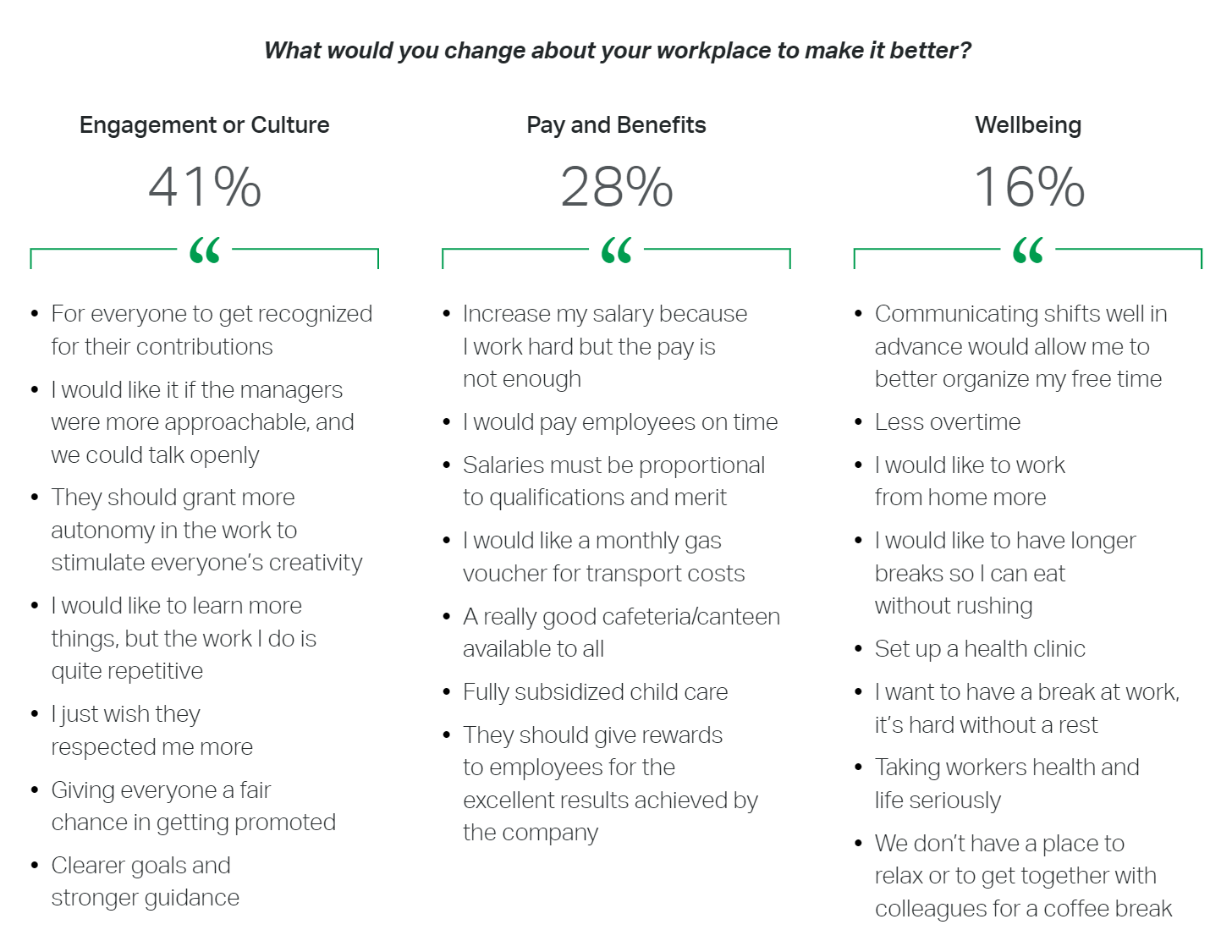
What is surprising is that the culture of the organization has twice the impact on engagement than pay and benefits at converting those on the fence.
What isn’t surprising is that the changes desired are as unique as the individual. While some prefer more opportunities to “work from home”, others wish they had a place to “get together with colleagues for a coffee break.”
Obviously, organizational leaders cannot be all things to all individuals. At the same time, I think there are some themes. And the good thing is, these are things leaders can do now, with zero impact to their budget.
- Show greater respect. It is difficult to follow someone if you do not feel respected. Respect for the individual’s time, unique family situation, and for them as an individual will likewise elevate their respect for you as a leader.
- Show greater recognition. Being sincere and expressing gratitude and recognizing the work they are doing is one thing. But good leaders have recognized that the real power behind gratitude is when you can demonstrate the impact their actions have had on the organization.
- Allowing greater autonomy. Although there are standards, processes and quality expectations for internal auditors, there are also opportunities for leaders to allow for creativity and autonomy. Encouraging this creativity helps keep the job interesting.
How we can help
We will refer to this, and similar studies, in the future and discuss what leaders and practice support professionals can do to create more effective organizations by focusing on their people.
We also have created several solutions to help audit management and leadership teams regularly assess and improve employee engagement or their Internal Audit organizations. Contact us to find out more.
References and additional resources
If you have the time to read more about this topic further, here are some links to Gallup’s report as well as some additional insights from Gallup that you will find interesting.




